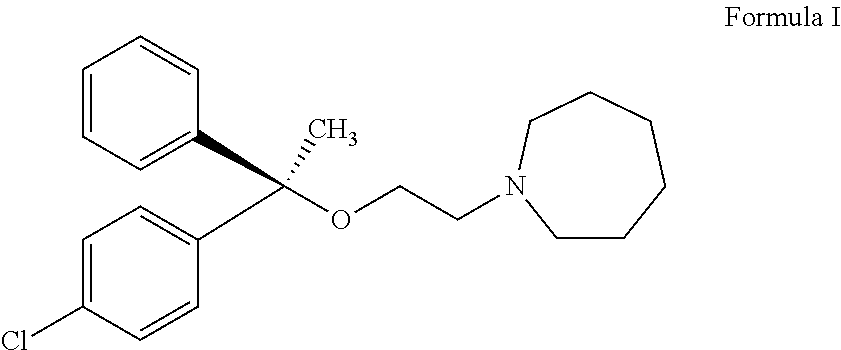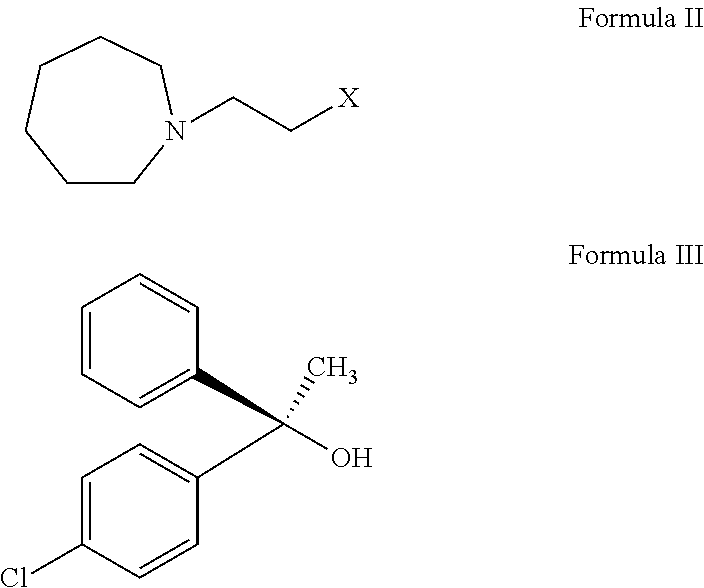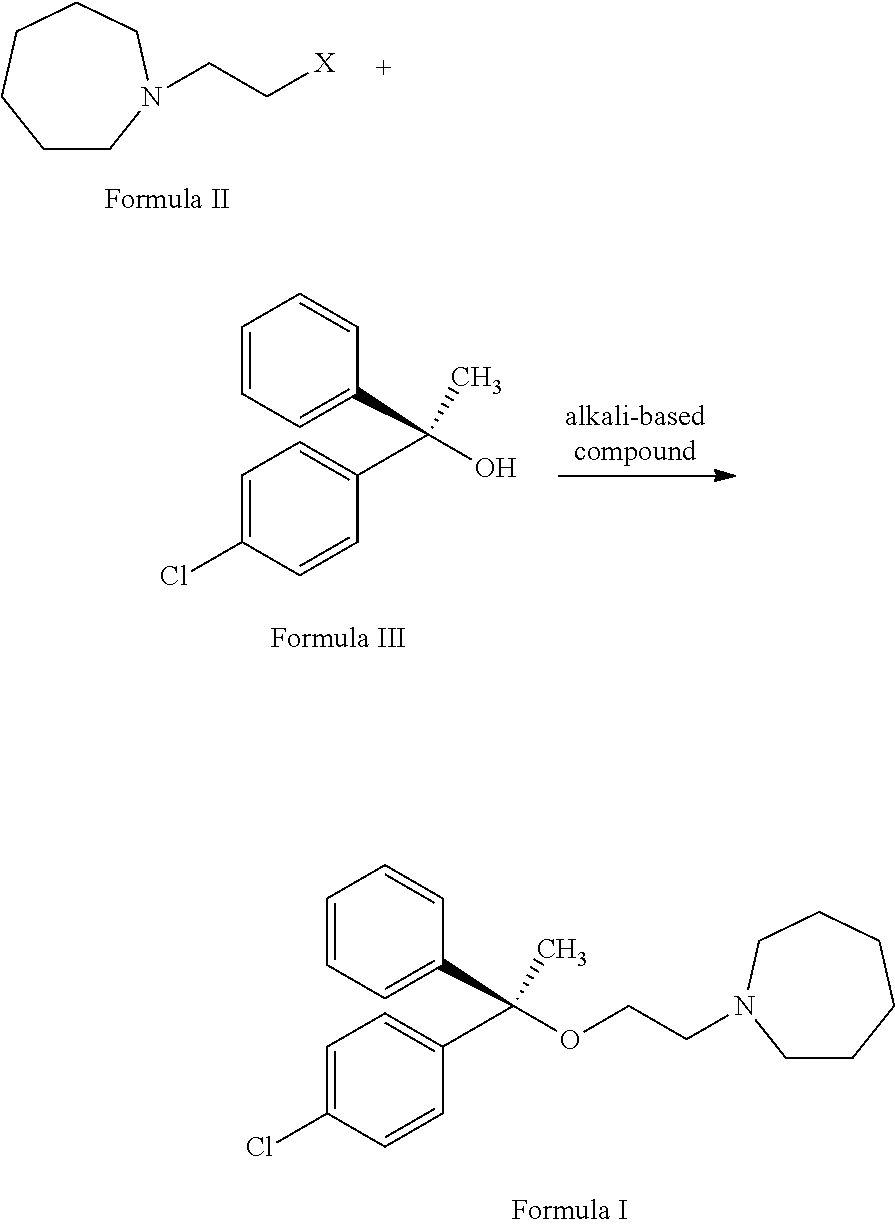L-setastine hydrochloride and preparation method thereof
a technology of lsetastine hydrochloride and lsetastine hydrochloride, which is applied in the field of compound of lsetastine hydrochloride, can solve the problems of threatening the health of humans, complicated clemastine fumarate, and high manufacturing cost for industrial production
- Summary
- Abstract
- Description
- Claims
- Application Information
AI Technical Summary
Benefits of technology
Problems solved by technology
Method used
Image
Examples
embodiment 1
Preparation of Reaction Compounds
[0036]The preparation for R-chlorodiphenethyl alcohol: References documents: Angew. Chem. Int. Ed. 2007, 46, 5373-5376 or Tetrahedron Letters, Vol. 37, No. 36, pp. 6453-6456, 1996.
[0037]The preparation for N-(2-bromoethyl)azepane and p-toluene sulfonic acid 2-aza-cyclohexyl ester: Referring to Patent Document (CS 248547, 1988), the azepane and chloroethanol are refluxed in toluene for 3 hours to obtain N-(2-hydroxyethyl)azepane, and then reacts with a halogenating agent (e.g. hydrobromic acid, phosphorus tribromide, thionyl chloride, etc.) or sulfonyl chloride (such as p-toluenesulfonyl chloride, m-nitrobenzenesulfonyl chloride, etc.) so as to produce corresponding halides (such as N-(2-bromoethyl)azepane) or a sulfonate (such as p-toluene sulfonic acid 2-aza-cyclohexyl ester)
embodiment 2
The Synthesis of L-setastine Hydrochloride
[0038]1. The 23.6 g (0.6 mole) of sodium amide and 100 ml of toluene are added in a reaction flask, and filing nitrogen gas into the reaction flask to stir at the temperature of 60˜70° C. And, 50 ml of toluene solution with 51.3 g (0.3 moles) of R-chlorodiphenethyl alcohol dissolved therein are completely and dropwisely added into the reaction flask within 1 hour, and heat preservation such reaction flask with reaction solution for 2 hours. Then, 100 ml of toluene solution with 74.2 g (0.36 moles) N-(2-bromoethyl)azepane dissolved therein are completely and dropwisely added into the reaction flask at the temperature of 70˜80° C., and then adding 5 grams of PEG400 therein to reflux for 5 hours and finally placed the reaction flask in the room temperature overnight.
[0039]2. The reaction flask with reaction solution as mentioned in step 1 is cooled until 0° C., and dropwisely adding 150 ml of water into the reaction flask and extracting the aqu...
embodiment 3
The Synthesis of L-setastine Hydrochloride
[0040]1.43.2 g (0.45 mol) of sodium tert-butoxide and 100 ml of acetonitrile are added to the reaction flask with nitrogen gas for stirring at the temperature of 70˜80° C. Then, 50 ml of acetonitrile with 51.3 g (0.3 mole) of R-p-dichlorobenzene ethanol dissolved therein are dropwisely and completely into the reaction flask for one hour, and then refluxing for two hours. And, 100 ml of acetonitrile with 74.2 g (0.36 mol) N-(2-bromoethyl)-azepine dissolved therein are dropwisely added into the reaction flask at the temperature of 70˜80° C., and then 3 grams of sodium iodide are added therein for refluxing for 4 hours.
[0041]2. The solvent in the reaction flask is recovered under the pressure reduction situation, and the reaction flask is cooled to the temperature of 0° C. And, 150 ml of water and 200 ml of toluene are dropwisely added into the reaction flask to generate an aqueous layer and a toluene layer, such that 100 ml of toluene is added...
PUM
| Property | Measurement | Unit |
|---|---|---|
| temperature | aaaaa | aaaaa |
| temperature | aaaaa | aaaaa |
| temperature | aaaaa | aaaaa |
Abstract
Description
Claims
Application Information
 Login to View More
Login to View More - R&D
- Intellectual Property
- Life Sciences
- Materials
- Tech Scout
- Unparalleled Data Quality
- Higher Quality Content
- 60% Fewer Hallucinations
Browse by: Latest US Patents, China's latest patents, Technical Efficacy Thesaurus, Application Domain, Technology Topic, Popular Technical Reports.
© 2025 PatSnap. All rights reserved.Legal|Privacy policy|Modern Slavery Act Transparency Statement|Sitemap|About US| Contact US: help@patsnap.com



